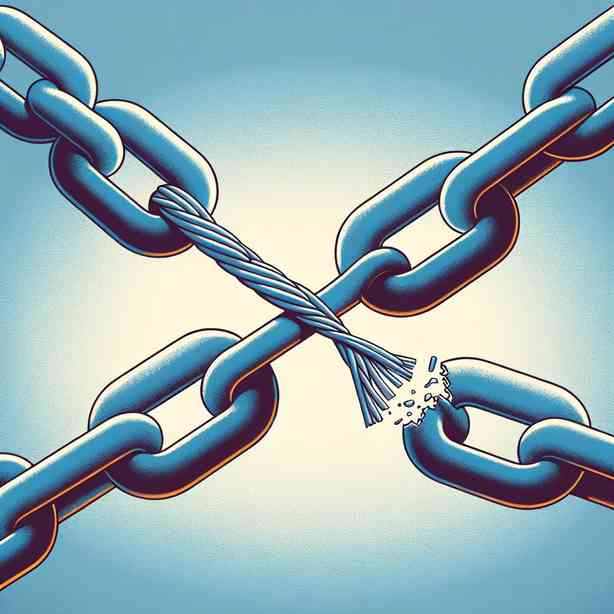
When we think of systems, we often focus on the strengths and capabilities of the individual components, yet every complex mechanism is built upon the interconnections of its parts. In digital and physical environments alike, cables, or connectors, serve as essential conduits that transmit energy, data, and information. However, what happens when one of these cables becomes the weakest link in the system? This occurrence can lead to significant challenges, impacting overall performance and efficiency. In this discussion, we will explore the profound implications of a weak cable connection, delving into its causes, effects, and potential preventive measures.
Understanding the role of cables is fundamental in both technological and infrastructural systems. Cables, whether they are optical fibers, electrical conduits, or data transmission lines, are designed to facilitate seamless communication and operation. They are the unsung heroes in almost every technological innovation, from the simplest household appliance to the most complex data centers. However, just as a chain is only as strong as its weakest link, a system’s efficiency is only as reliable as its weakest cable connection.
The consequences of a weak cable can manifest in various forms. For instance, in data networks, a faulty cable can lead to slower transfer speeds, increased latency, and even packet loss. In electrical engineering, a compromised cable may result in energy inefficiencies or accidents due to short circuits. These glitches can be detrimental, bringing operations to a standstill and necessitating costly repairs. Further, in critical environments such as hospitals or data centers, any downtime resulting from weak cables can have profound consequences, sometimes affecting lives or large-scale operations.
Identifying the factors that lead to weak cables is essential for preventing the associated problems. The most common reasons for cable failure include physical damage, wear and tear from exposure to environmental factors, and poor installation practices. For instance, cables that are subject to bending, twisting, or crushing are more likely to fail. Similarly, cables exposed to extreme temperatures or corrosive substances can deteriorate more quickly than anticipated. Moreover, the quality of the installation process is often overlooked; improper connections or inferior materials can severely undermine the integrity of a cable.
In light of these challenges, various strategies can be employed to mitigate the risk of weak cables. Regular maintenance is critical. Scheduling routine inspections can help identify any signs of wear or damage before they escalate into major issues. Test equipment to check for signal loss or the integrity of the cables can be immensely beneficial in early detection. Additionally, investing in higher-quality cables that are manufactured to withstand environmental stressors will enhance overall resilience.
Another key aspect of maintaining strong connections is the importance of skilled installation. Ensuring that individuals responsible for setting up the cables are well-trained can prevent numerous issues. For instance, adherence to the manufacturer’s specifications, especially regarding bending radius and termination techniques, can significantly enhance durability. Rigorous testing after installation, including verifying connections and performance, is equally fundamental to ensure that cables operate at their optimal capacity.
Moreover, technology continues to evolve, presenting new options for more robust cable solutions. Emerging innovations such as fiber optics offer significant advantages over traditional copper cables, including higher data transfer rates and resilience to electromagnetic interference. Similarly, advancements in cable materials and design can enhance strength and reduce susceptibility to various forces. Exploring these technologies provides an opportunity for businesses and individuals to future-proof their systems against potential weaknesses.
Ultimately, the impact of weak cables extends beyond individual systems—it reflects on an organization’s efficiency and reputation. In sectors where reliability is paramount, such as telecommunications, finance, or healthcare, maintaining strong connections is crucial for continued success. A single weak cable can have ripple effects, causing downtime, data breaches, and loss of productivity that can tarnish an organization’s standing.
In conclusion, the strength of a system is inextricably linked to the cables that connect its components. By recognizing the significance of these connections and proactively working to mitigate any weaknesses, we can enhance the performance and reliability of our systems. Awareness, maintenance, and investment in quality solutions are critical to ensuring that cables do not become the weakest link. As we continue to rely on connectivity across numerous domains, prioritizing these factors will foster resilience and efficiency, enabling us to navigate an increasingly interconnected world with confidence.


